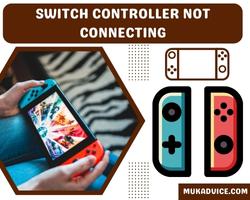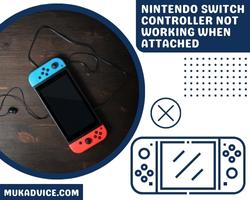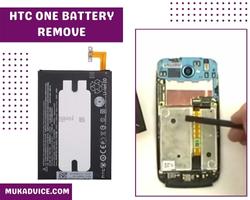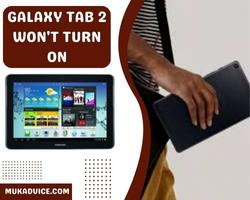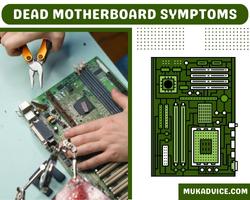There’s nothing worse than getting ready to dive into your favorite game, only to realize that your Switch controller isn’t connecting. Whether you’re in the middle of a competitive match or just want to enjoy a quick session, a non-responsive controller can quickly derail your plans.
Don’t worry you’re not alone! Switch controller connection issues are common, and fortunately, they’re usually easy to fix.
From Bluetooth problems and low battery levels to software glitches and syncing issues, there are several reasons why your controller might not be connecting to your Nintendo Switch. While this can be frustrating, the good news is that most of these problems can be resolved with a few simple troubleshooting steps.
Whether you’re using a Joy-Con, Pro Controller, or any other compatible device, we’ve got you covered with practical solutions that will help you get back to gaming in no time.
In this guide, we’ll walk you through the most effective methods for fixing your Switch controller connection issue, ensuring that you can enjoy seamless gameplay without interruptions.
Switch controller not connecting
Let’s dive in and get your controller back in action!
1. Understanding the Problem
Before diving into the solutions, it’s important to understand the issue. Your Nintendo Switch controller may not connect for a variety of reasons. The most common reasons include:
- Bluetooth connection issues: The Nintendo Switch uses Bluetooth to connect wirelessly to Joy-Con and Pro controllers. If there’s interference or a disruption in the Bluetooth signal, the controller might fail to connect.
- Software glitches: Sometimes, a small bug or glitch in the system software can cause connection issues.
- Battery problems: If your controller is low on battery or not charged at all, it won’t be able to connect.
- Syncing problems: Controllers need to be properly synced with the Switch, and sometimes that connection is lost for no obvious reason.
Now, let’s dive into how to troubleshoot and fix these issues!
2. Basic Troubleshooting Steps
When a Switch controller won’t connect, the first step is always to check the basics. These quick fixes may seem simple, but they can often resolve the issue in no time.
Power Cycle Your Switch
It’s always a good idea to start with a power cycle. Power cycling involves turning the Switch off completely and turning it back on to reset the system. This can help clear up minor software issues that might be preventing your controller from connecting.
To power cycle your Nintendo Switch:
- Press and hold the Power button for about three seconds.
- Select Power Options and then choose Turn Off.
- Wait for about 10-15 seconds.
- Press and hold the Power button again to turn the Switch back on.
Once the console has rebooted, try connecting your controller again. It may just do the trick!
Check Controller Battery Levels
If your Switch controller is low on battery, it might not connect properly. Make sure the controller is charged and try again.
To check the battery level of your controller:
- Press and hold the Home button on your controller.
- The battery level will appear on the screen at the top right.
If the battery is low, plug the controller into the Switch using a USB-C cable or dock the console to charge it. Once the controller is fully charged, try reconnecting.
3. Resetting the Controller
Sometimes the controller simply needs to be reset. This can help clear any connection issues between the controller and the Nintendo Switch.
To reset the controller:
- Detach the Joy-Con from the Switch console (if using Joy-Con controllers).
- Press the small button on the back of the controller. It’s located between the SL and SR buttons.
- Hold it down for 5 seconds, then release.
- Try reconnecting the controller by sliding it back onto the Switch or syncing it using the Sync button if you’re using a Pro Controller.
4. Bluetooth Connectivity Issues
The most common reason for a Switch controller not connecting is Bluetooth interference. The Switch uses Bluetooth to connect to controllers, and if there’s any interference, it can disrupt the connection.
Interference and Range
Bluetooth signals can be disrupted by objects like walls or even other wireless devices. If you’re experiencing issues, consider the following:
- Move closer to the Switch console. The Bluetooth signal can weaken as you move farther away.
- Minimize interference. Make sure there aren’t too many wireless devices (like routers, microwaves, or even other Bluetooth devices) between you and the Switch.
If you’re using the Switch Pro Controller, it’s a good idea to use it within about 10 feet of the console for optimal performance.
Reconnecting the Controller
If your Switch controller still won’t connect wirelessly, try re-pairing the device:
- On your Switch, go to System Settings.
- Scroll down and select Controllers and Sensors.
- Select Disconnect Controllers.
- Then, hold the Sync button on your Joy-Con or Pro Controller until the lights begin flashing.
- Select Pair New Controller on the Switch screen.
This process should re-establish the connection between the controller and the console.
5. Fixing Software Glitches
Software glitches are another common culprit when it comes to controller connection problems. It could be an issue with the Nintendo Switch system software or even a bug in the controller firmware.
One solution is to update the software on your Switch:
- Go to System Settings from the main menu.
- Scroll down to System and select System Update.
- If an update is available, the console will prompt you to install it. Follow the on-screen instructions.
Additionally, ensure that your controller firmware is up to date:
- If you’re using a Pro Controller, connect it via USB to the Switch to ensure it’s updated.
6. Updating Firmware
Both the Nintendo Switch and your controller require regular updates to function properly. If your controller is not connecting, it could be due to outdated firmware. Fortunately, updating the firmware is simple.
Updating the Controller Firmware
To update the firmware on a Pro Controller or Joy-Con:
- Go to System Settings.
- Scroll to Controllers and Sensors.
- Select Update Controllers.
- The system will check for any available updates. If an update is found, it will automatically be installed.
Once the update is complete, try connecting your controller again. Updating firmware ensures that your devices are running the latest patches and bug fixes, which can resolve connection problems.
7. Switching to Wired Connection
If all else fails, consider using a wired connection. While this eliminates the wireless convenience, it can help you continue gaming while troubleshooting the wireless issue.
To use your Pro Controller or Joy-Con with a wired connection:
- Connect the controller directly to the Switch dock using a USB-C cable.
- Your Switch should automatically recognize the controller, and you’ll be able to continue gaming.
If you’re using Joy-Con controllers, simply slide them onto the Switch console, and they’ll connect via the physical connection.
8. When to Consider a Replacement
If none of the above steps work, you might be dealing with a defective controller. If your controller is consistently failing to connect despite troubleshooting, it could be time to consider a replacement.
Before purchasing a new controller, ensure that the issue isn’t with the Switch console itself. Test the controller on another Switch or connect it to a different device (like a PC) to see if it works.
If the controller is under warranty, you can reach out to Nintendo’s customer support for a replacement.
Conclusion
Dealing with a Switch controller not connecting can be incredibly frustrating, especially when you’re eager to jump into your next gaming session. However, as we’ve seen, most of these issues can be resolved with a few simple troubleshooting steps.
Whether it’s restarting your Switch, checking the controller’s battery, resetting the connection, or updating the software, there are plenty of ways to get your controller back up and running.
Don’t forget that Bluetooth interference and connection range can also play a big role in whether or not your controller syncs properly. By moving closer to your console or minimizing wireless interference, you can often solve the issue with ease. And, of course, using a wired connection as a backup is a great option if you’re still facing trouble.
If you’ve tried everything and the problem persists, it might be time to consider a replacement. But, with these troubleshooting methods, you’ll likely have your controller working perfectly again in no time.
We hope this guide helps you resolve any connection issues, so you can get back to enjoying your Nintendo Switch without a hitch. Happy gaming, and may your next session be smooth and uninterrupted!


